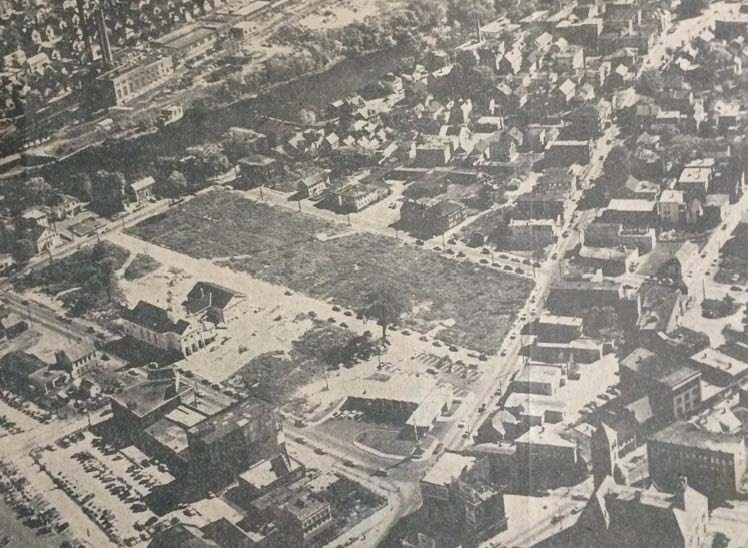 Image by Lowell Sun
Image by Lowell Sun
This aerial view shows the area between Charles and Church streets, in the northern section of Back Central that the city cleared for the construction of Central Plaza in the early 1960s.
In September 1957 a series of earthquakes shook the tiny Azorean island of Faial followed by numerous eruptions of a volcano centered on Capelinhos, a small cape extending off the island’s western coast. The volcanic activity lasted over a year with the resulting ash and seismic disturbances destroying homes and displacing nearly 2,000 Azoreans. In 1958, special congressional legislation authored by Rhode Island Representative John O. Pastore and Massachusetts Senator John F. Kennedy permitted the immigration of 1,500 Azoreans to the United States. In the following several years, a number of Azorean families, having received this special status, settled in Lowell.
Although the Azorean newcomers to Lowell attracted attention in the local press, their numbers appear to have been quite small. Far more consequential was the influx of Portuguese after the passage of the Immigration and Nationality Act of 1965, which abolished the old quota system. From the late 1960s until early 1980s, an estimated 5,000-6,000 Portuguese settled in Lowell. Possibly as high as 80 percent of these immigrants were born in the Azores, about 15 percent were from mainland Portugal, and around 5 percent were Madeiran. In addition, a few hundred were from Brazil. Remarkable as well is the fact that the bulk of this growth in the city’s Portuguese population, into the mid-1970s, occurred during a period of economic struggle in Lowell with the city continuing to lose population. Only the number of Greek immigrants to Lowell, at this same time, rivaled that of the Portuguese and together these newcomers helped prevent further erosion of the social and economic well-being of the city.
For the Portuguese in Back Central, this new wave of immigrants aided in the revitalization of the various social clubs, societies, and even the physical character of the neighborhood. Flower-filled gardens, vegetable patches, and grape arbors, which had long been a feature of the many small lots of land of Portuguese residences, were ever more abundant in densely urban Back Central. Two of the most significant physical changes to the neighborhood—the construction, in the mid-1950s, of the Bishop Markham public housing development, to the west of Gorham Street, and the building, in 1960-61, of Central Plaza, extending from the northern side of Charles Street to Church Street—had resulted in the demolition of numerous tenements, houses, and commercial properties. An even greater number of dwellings in the neighborhood would have been lost and large part of the physical fabric of Back Central destroyed had the plans in the 1960s to extend the Lowell Connector Highway through this part of Lowell been realized. But widespread local opposition blocked this major highway project.
